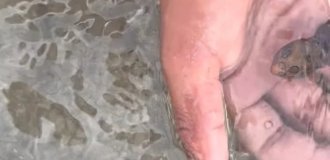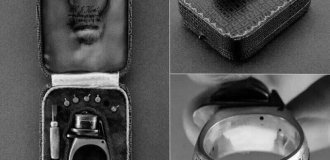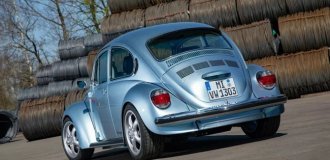“Great Pacific Garbage Patch”, “Pacific Trash Vortex”, “North Pacific Gyre”, “Pacific Garbage Island” - this giant island of garbage that is growing at a gigantic rate is called by many different names.

The garbage island has been talked about for over half a century, but practically no action has been taken. Meanwhile, irreparable damage is being done to the environment, entire species of animals are becoming extinct. There is a high probability that a time will come when nothing can be fixed. So, read more about the problem of ocean pollution below.
Pollution began when plastic was invented. On the one hand, it is an irreplaceable thing that has made people's lives incredibly easier. It has made them easier until the plastic product is thrown away: plastic takes more than a hundred years to decompose, and thanks to ocean currents it is thrown together into huge islands. One such island, larger than the American state of Texas, floats between California, Hawaii and Alaska - millions of tons of garbage. The island is growing rapidly, every day ~2.5 million pieces of plastic and other garbage are dumped into the ocean from all continents. Slowly decomposing, plastic causes serious harm to the environment. Birds, fish (and other inhabitants of the ocean) suffer the most. Plastic waste in the Pacific Ocean causes the death of more than a million seabirds per year, as well as more than 100 thousand individuals of marine mammals. Syringes, lighters and toothbrushes are found in the stomachs of dead seabirds - all these objects are swallowed by birds, mistaking them for food. 
The "Garbage Island" has been growing rapidly since about the 1950s due to the peculiarities of the North Pacific current system, the center of which, where all the garbage ends up, is relatively stationary. According to scientists, the current mass of the garbage island is more than three and a half million tons, and the area is more than a million square kilometers. The "island" has a number of unofficial names: "Great Pacific Garbage Patch", "Eastern Garbage Patch", "Pacific Trash Vortex", etc. In Russian, it is sometimes also called "garbage iceberg". In 2001, the mass of plastic exceeded the mass of zooplankton in the island area by six times.

This enormous pile of floating garbage – essentially the planet's largest dump – is held in place by swirling underwater currents. The "soup" stretches from a point about 500 nautical miles off the coast of California across the northern Pacific Ocean past Hawaii and almost reaching distant Japan.

American oceanographer Charles Moore, the discoverer of this "great Pacific garbage patch", also known as the "gyre-dump", believes that about 100 million tons of floating trash are circling in this region. Marcus Eriksen, director of science at the Algalita Marine Research Foundation (USA), founded by Moore, said yesterday: "Initially, people assumed that this was an island of plastic garbage, on which you could almost walk. This idea is inaccurate. The consistency of the patch is very similar to plastic soup. It is simply endless - in area, perhaps twice the size of the continental United States." The story of Moore's discovery of the garbage patch is quite interesting:
14 years ago, a young playboy and yachtsman, Charles Moore, the son of a wealthy chemical magnate, decided to relax in Hawaii after a session at the University of California. At the same time, Charles decided to test his new yacht in the ocean. To save time, he sailed straight ahead. And a few days later, Charles realized that he had sailed into a garbage dump.
"For a week, every time I went out on deck, some plastic trash was floating past," Moore wrote in his book Plastics are Forever? "I couldn't believe my eyes: how could we pollute such a huge area of water? I had to sail through this garbage dump day after day, and there was no end in sight..."
Sailing through tons of household waste changed Moore's life. He sold all his shares and used the proceeds to found the Algalita Marine Research Foundation (AMRF), an environmental organization that began studying the ecological state of the Pacific Ocean. His reports and warnings were often brushed aside and not taken seriously. Probably, a similar fate would have awaited the current AMRF report, but nature itself helped the environmentalists - January storms washed up more than 70 tons of plastic waste on the beaches of the islands of Kauai and Niihau. They say that the son of the famous French oceanographer Jacques Cousteau, who went to Hawaii to shoot a new film, almost had a heart attack at the sight of these mountains of garbage. However, plastic ruined not only the lives of vacationers, but also led to the death of some birds and sea turtles. Since then, Moore's name has not left the pages of the American media. Last week, the founder of the AMRF warned that if consumers do not limit their use of non-recyclable plastic, the surface area of the “garbage soup” will double in the next 10 years and will threaten not only Hawaii, but all countries in the Pacific region.

But in general, they try to “ignore” the problem. The dump does not look like an ordinary island; its consistency resembles “soup” — plastic fragments float in the water at a depth of one to a hundred meters. In addition, more than 70 percent of all the plastic that ends up here sinks to the bottom layers, so we cannot even imagine exactly how much trash can accumulate there. Since the plastic is transparent and lies directly under the surface of the water, the “polyethylene sea” cannot be seen from a satellite. The trash can only be seen from the bow of a ship or by diving with scuba gear. But sea vessels are rare in this area, because since the days of sailing ships, all ship captains have plotted routes away from this section of the Pacific Ocean, known for the fact that there is never any wind here. In addition, the North Pacific Gyre is neutral waters, and all the trash that floats here is no one's property.


Oceanologist Curtis Ebbesmeyer, a leading authority on floating trash, has been tracking the accumulation of plastic in the oceans for more than 15 years. He compares the garbage cycle to a living creature: "It moves around the planet like a large animal let off a leash." When this animal approaches land - and in the case of the Hawaiian archipelago, this is exactly what happens - the results are quite dramatic. "When a garbage patch burps, the entire beach is covered in this plastic confetti," Ebbesmeyer says.

According to Eriksen, the slowly circulating mass of water teeming with garbage also poses a health hazard. Hundreds of millions of tiny plastic pellets, the raw material of the plastics industry, are lost every year and eventually end up in the sea. They pollute the environment by acting as chemical sponges that attract man-made chemicals like hydrocarbons and the pesticide DDT. This dirt then ends up in people's stomachs along with their food. "What ends up in the ocean ends up in the stomachs of ocean creatures, and then on your plate. It's that simple."

The main polluters of the ocean are China and India. Here it is considered normal to throw garbage directly into the nearest body of water. Below is a photo that is not worth commenting on...


Here is a powerful North Pacific subtropical eddy, formed at the meeting point of the Kuroshio Current, northern trade wind currents and intertrade wind countercurrents. The North Pacific Gyre is a desert of sorts in the World Ocean, where all sorts of rubbish — algae, animal carcasses, wood, shipwrecks — has been washed up for centuries from all over the world. It is a real dead sea. Due to the abundance of rotting matter, the water in this area is saturated with hydrogen sulfide, so the North Pacific Gyre is extremely poor in life — there are no large commercial fish, no mammals, no birds. No one, except for colonies of zooplankton. Therefore, commercial vessels do not come here, even military and merchant ships try to avoid this place, where high atmospheric pressure and a fetid calm almost always reign.






















